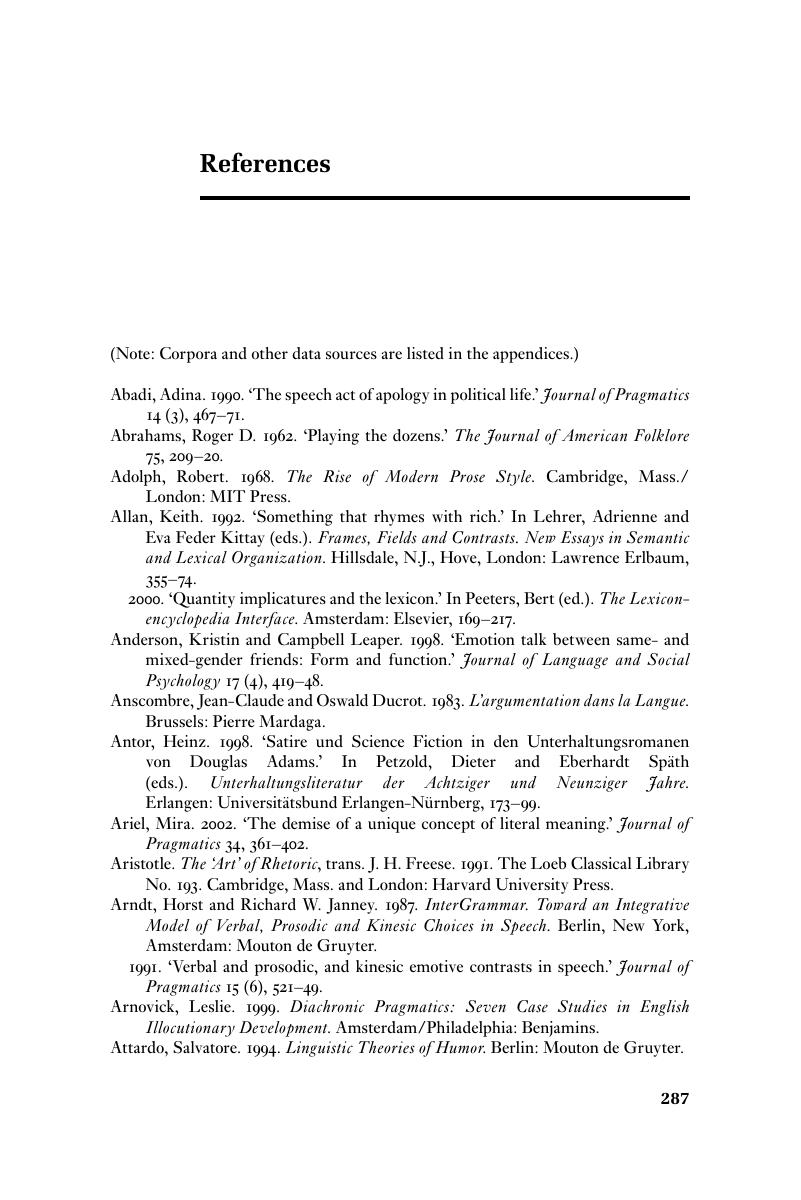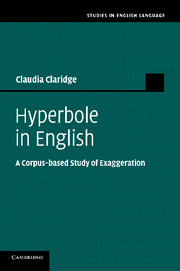Book contents
- Frontmatter
- Contents
- List of figures
- List of tables
- Acknowledgements
- 1 Introduction
- 2 The characteristics of hyperbole
- 3 Realisations of hyperbole
- 4 Using hyperbole: the speaker perspective
- 5 Hyperbole in interaction
- 6 Conventionalisation
- 7 The rhetoric of hyperbole
- Conclusion
- Appendix 1 Modern corpora used (Chapters 1, 2, 3, 4, 5 and 6)
- Appendix 2 Modern sources other than corpora (Chapters 2, 3, 4 and 5)
- Appendix 3 Conventionalisation in dictionaries (Chapter 6)
- Appendix 4 Corpora, dictionaries and texts used for the diachronic investigation (Chapter 6)
- Appendix 5 Sources used in Chapter 7
- References
- Index
- References
References
Published online by Cambridge University Press: 04 February 2011
- Frontmatter
- Contents
- List of figures
- List of tables
- Acknowledgements
- 1 Introduction
- 2 The characteristics of hyperbole
- 3 Realisations of hyperbole
- 4 Using hyperbole: the speaker perspective
- 5 Hyperbole in interaction
- 6 Conventionalisation
- 7 The rhetoric of hyperbole
- Conclusion
- Appendix 1 Modern corpora used (Chapters 1, 2, 3, 4, 5 and 6)
- Appendix 2 Modern sources other than corpora (Chapters 2, 3, 4 and 5)
- Appendix 3 Conventionalisation in dictionaries (Chapter 6)
- Appendix 4 Corpora, dictionaries and texts used for the diachronic investigation (Chapter 6)
- Appendix 5 Sources used in Chapter 7
- References
- Index
- References
Summary

- Type
- Chapter
- Information
- Hyperbole in EnglishA Corpus-based Study of Exaggeration, pp. 287 - 298Publisher: Cambridge University PressPrint publication year: 2010



